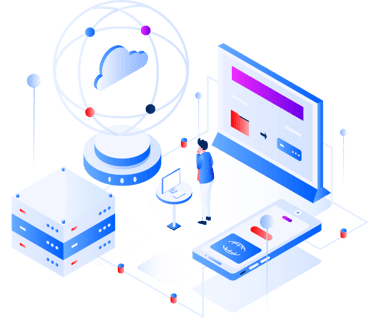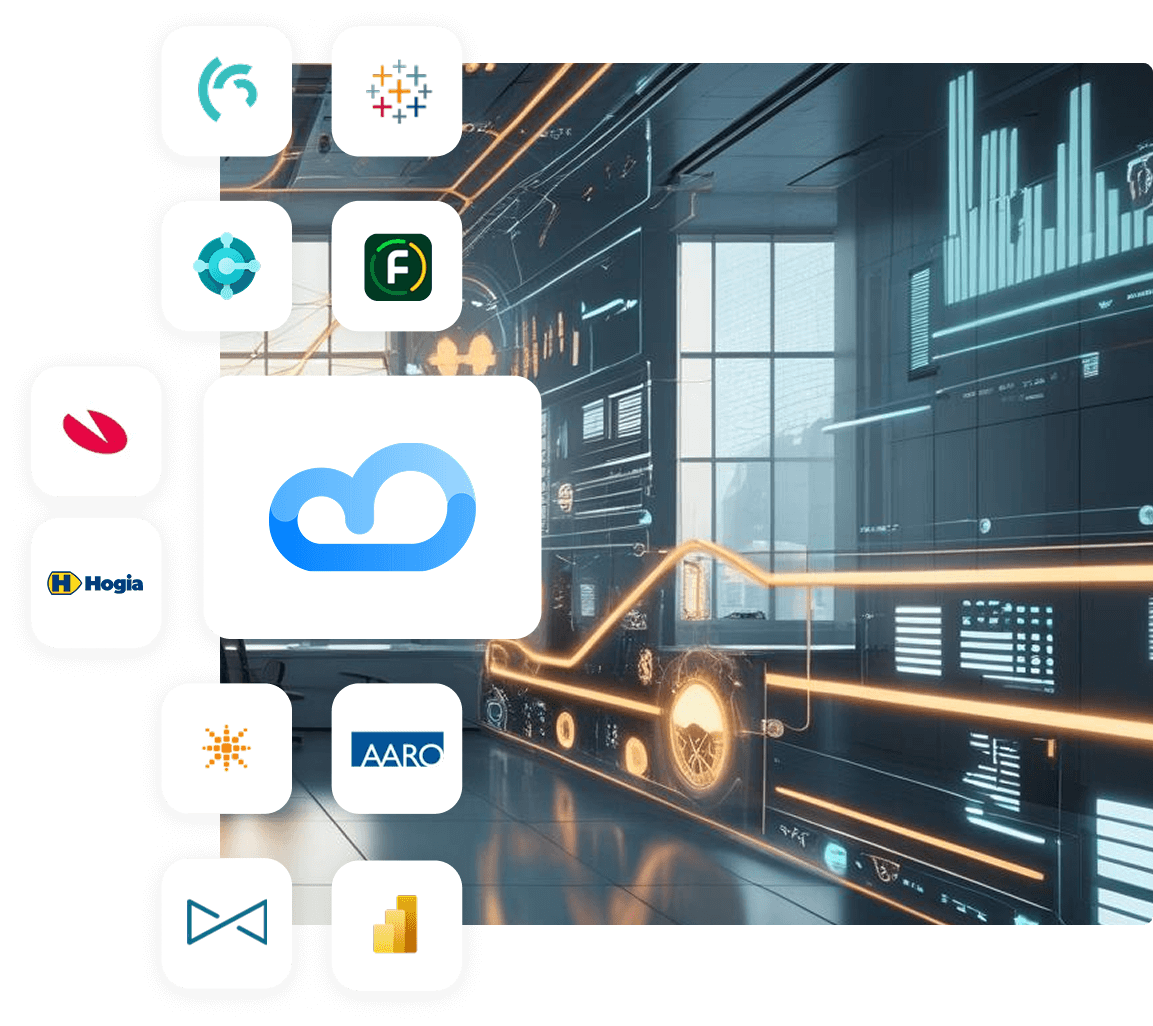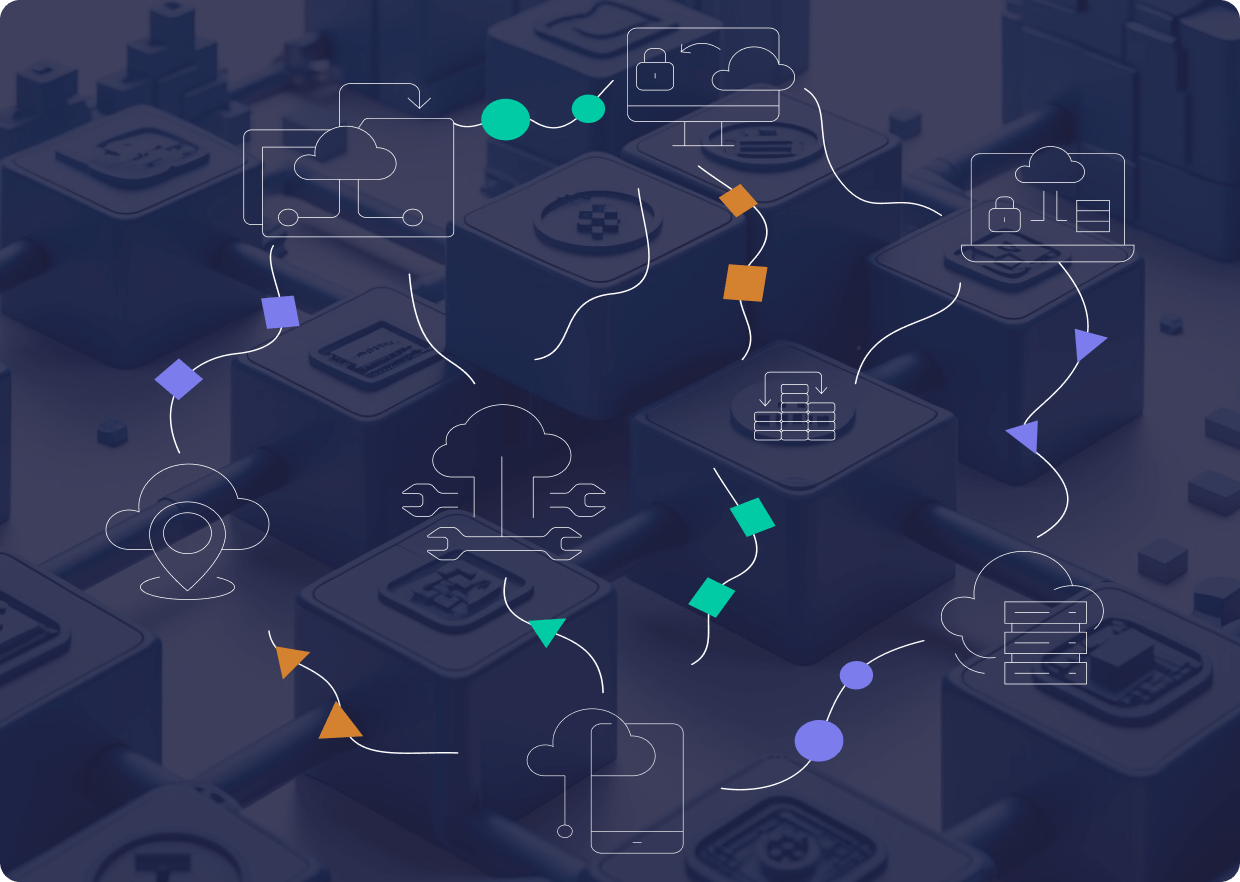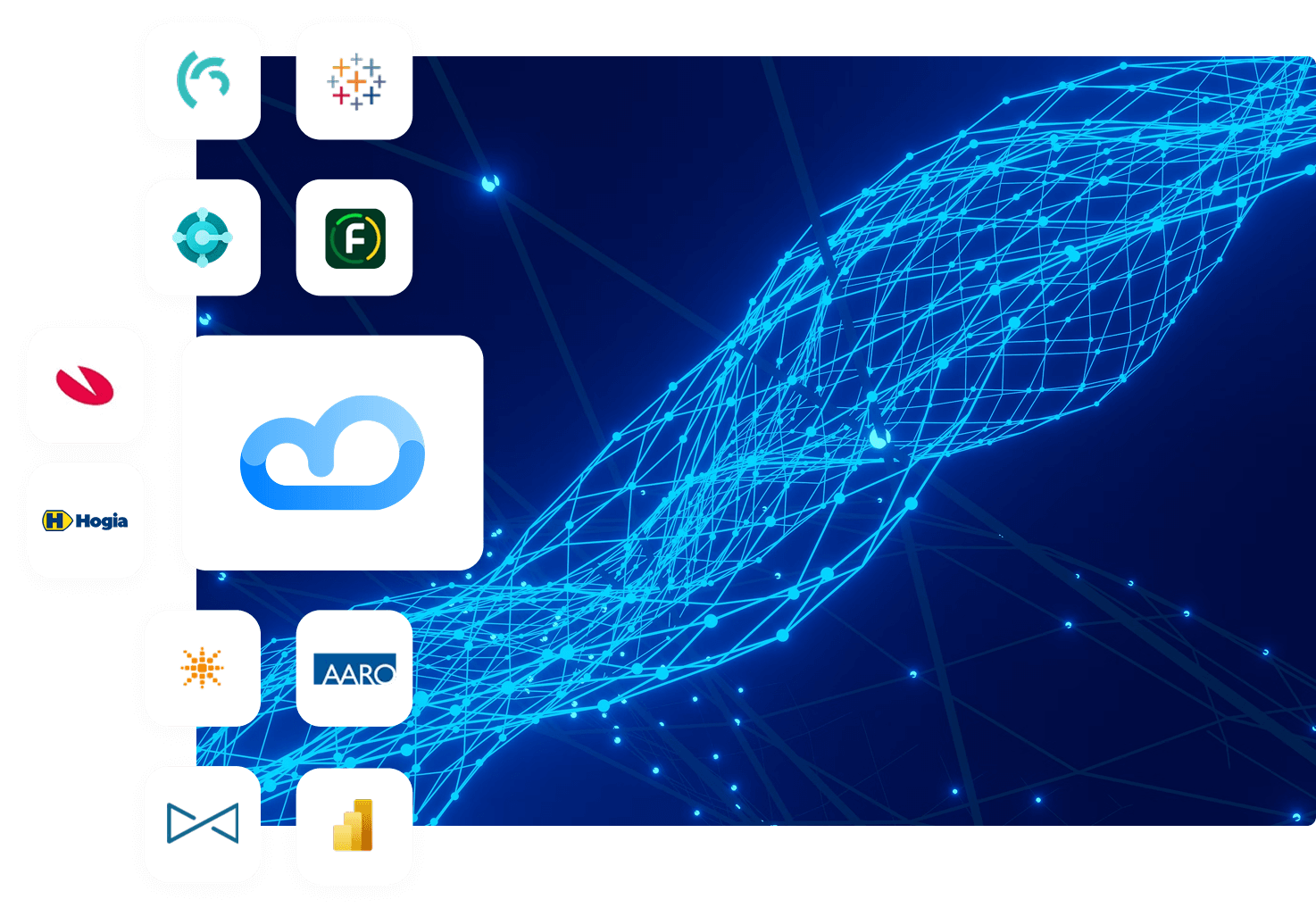System Integration – the foundation for sustainable digitalization
Digitization has long been a priority, but true digital transformation requires more than just implementing new systems. Today’s organizations use an...
Our Business Cloud integration platform suits large and small businesses!

Feel free to contact us to hear how we can help you with integrations (new and old), reporting, budget and forecasting.
+46(0)707 - 81 97 23Read more about what happens at Lundatech, here we gather knowledge and information.

Vår integrationsplattform Business Cloud passar stora som små verksamheter!

Kontakta oss gärna för att höra hur vi kan hjälpa er med integrationer (nya som gamla), rapportering, budget & prognos.
+46(0)707 - 81 97 23Läs mer om vad som händer på Lundatech, här samlar vi kunskap och information.


Digital transformation isn’t about technology – it’s about direction, structure, and the ability to adapt. Moving from PDFs and isolated efforts to real change takes more than upgrading systems or digitizing a single process. It requires an entirely new way of thinking and working across the organization.
In this article we will go through:
The transformation happens on multiple levels at once:
Strategic: by using data to make real-time decisions rather than relying on gut feeling
Operational: by connecting systems, processes, and people
Cultural: by creating an organization where digital ways of working are the norm, not the exception
The goal isn’t to become digital for its own sake. It’s to build an organization that is adaptable, data-driven, and customer-centric – with technology as a support, not a barrier. Transformation isn’t a destination, but a direction. And that’s why it takes more than just a new platform or system. It requires a coherent structure for how information is managed, shared, and used.
One of the most common roadblocks in digital transformation is the information silo. Most organizations use a dozen or so different IT systems – often specialized, often good at what they do – but rarely communicating with each other.
The result is:
Duplicate data entry
Manual transfers in Excel
Uncertainty about which number is the “correct” one
Difficult to perform coherent analyses
According to Lundatech’s experience, this is not primarily a technical problem – it’s a structural one. Often, there is no unified strategy for how data should flow and who is responsible for what.
Working systematically with integration means:
A well-executed integration strategy leads to reduced support costs, fewer errors, faster processes – and most importantly: staff that trust the numbers they see.
Tip: A good starting point is to gather all integrations in one place, with a clear overview of status, errors, and history. That’s how you begin to build internal trust in your data.
Digital transformation isn’t just about collecting and structuring data – it’s about using it in ways that truly change how work gets done. Automation is one of the most powerful tools for achieving this.
When manual processes are automated, the impact is often immediate and measurable:
But automation is about more than just “setting up a rule.” It requires a deep understanding of business workflows – identifying where data enters, where decisions are made, and where bottlenecks occur.
Common examples of business processes well-suited for automation:
Väl implementerad automatisering handlar inte om att ersätta människor – utan om att låta dem fokusera på rätt saker. Många verksamheter har börjat digitalisera, men sitter fortfarande fast i manuella processer mellan systemen. Ett smart första steg är att identifiera de punkter där ni lägger mest tid på att dubbelkolla, flytta eller repetera information.
We recommend booking a demo of Lundatech Business Cloud – our integration platform that enables automated flows between your systems.
In an age where data is generated at an unprecedented pace, the ability to turn that data into meaningful insights is crucial for making well-informed decisions. Digital transformation isn’t just about collecting data – it’s about effectively analyzing and using it to drive the business forward.
Challenges of traditional decision-making
Many organizations still rely on manual processes and gut feeling when making decisions. This can lead to:
Benefits of Data-Driven Decision Support
Implementing data-driven decision support systems offers several advantages:
According to a study published in the Journal of Business Research, companies that implemented data-driven decision support systems saw an average increase of 5–6% in productivity and profitability.
Implementing effective decision support systems
To successfully implement a decision support system, organizations should:
Examples of use cases
Investing in robust decision support systems is no longer a luxury – it’s a necessity for organizations aiming to stay competitive in a data-driven world.

Digital transformation is fundamentally built on trust – not just in systems or technology, but in the data that underpins decisions, analyses, and customer experiences. Yet trust in data is often the first thing to break down.
Why trust is crucial
When users are repeatedly faced with incorrect figures, outdated reports, or conflicting information from different systems, two things happen:
According to Gartner, 84% of business leaders say they do not fully trust the data in their organization when making decisions.¹
How trust is built into the digital ecosystem
Building trust isn’t about demanding blind faith in numbers – it’s about creating transparent and traceable data processes. This means, among other things, that:
Proven methods for ensuring data trustworthiness:
Notifications & alerts: If an integration fails or incorrect data appears, the right people should be automatically notified – ideally before users even notice
Then it might be worth exploring how a monitoring structure with real-time alerts works in practice.
¹ Gartner: “The State of Data Quality in the Enterprise” (2023)
Digital transformation isn’t a one-time effort – it’s a continuous process of change. Technology, business models, customer behaviors, and regulations are constantly evolving. That’s why digital infrastructure must be designed to adapt – not just to function in the present.
A scalable and future-proof architecture allows you to replace outdated systems, introduce new tools, and meet emerging demands – without having to rebuild everything from scratch.
When digitalization becomes a barrier instead of an opportunity
Many organizations are stuck with outdated solutions for one simple reason: changing them is too costly or too risky. Time, money, and resources have been invested in custom-built integrations or systems that are tightly interwoven. The result is:
According to Forrester, 76% of IT leaders in mid-sized companies say system integrations are the biggest barrier to adopting new technology solutions.¹
How to build for flexibility and change
A future-proof solution means that every new component – whether it’s a business system, an IoT flow, or an AI service – can be connected without compromising the whole.
It requires:
¹ Forrester: “State of Modern Enterprise IT 2023”
Digital transformation is often a complex project – but the problems are usually very concrete:
Systems that don’t communicate
Data that can’t be trusted
Reporting that happens after the fact, instead of in real time
Difficulty introducing new systems without rebuilding the entire structure
We’ve developed an integration platform that lets you take control of your entire information flow – whether you’re working with cloud services, on-premise installations, or a combination. By connecting your existing systems, structuring your data, and automating processes, we remove the typical bottlenecks that hold back digital progress.
With Lundatech Business Cloud you get:
A unified integration platform that replaces scattered, custom-built solutions
A data model that harmonizes and ensures data quality across the organization
Full visibility and traceability through dashboards, alerts, and validation rules
The ability to scale without rebuilding – new systems can be easily connected
Our product solves the practical issues that often cause transformation to remain just a vision – and helps you bring it to life in your day-to-day operations.

It’s a long-term shift in how an organization structures itself, makes decisions, and creates value using digital tools and frameworks. It’s not just about technology – it’s also about culture, processes, and strategy.
Signs that it’s time include: many manual processes, difficulty accessing coherent data, low trust in system-generated figures, or challenges in implementing new systems. Transformation isn’t something you ever fully “complete” – it’s a direction to start moving toward.
No, not usually. One of the keys to a successful transformation is connecting existing systems in a smart way – not throwing everything out and starting over. Through integration and data modeling, much can be built on what you already have.
Digitization means converting analog processes into digital ones – for example, using e-signatures instead of paper. Digital transformation is broader – it’s about changing the entire way of working, not just the tools.
That depends on the complexity of your current system environment, but many organizations see tangible results within weeks – not months. The first step is often to map the current state and identify the biggest bottlenecks.
It varies, but it’s often a collaboration between the leadership team, IT, and business unit managers. The most important thing is that the transformation is driven by the business – not just the IT department.
No. Small and medium-sized businesses also have a lot to gain by structuring their data, automating processes, and creating better decision-making support. Smaller organizations often have the added advantage of being able to adapt more quickly.
Digital transformation isn’t about replacing people with technology – it’s about freeing up time from repetitive tasks so employees can focus on value-creating work. However, it does require support, clarity, and sometimes upskilling.
Security is critical. It involves both technical safeguards (encryption, authentication, isolated databases) and having control over where and how data flows. The right platform and structure minimize risks – and increase traceability.
It’s both. Technology enables the transformation, but it’s the business that sets the goals and realizes the impact. That’s why the project needs broad alignment – not just within IT.
The cost varies depending on scope, system landscape, and level of ambition. But by working with a scalable integration platform and a clear strategy, you can achieve impact quickly—without making large investments all at once

Digitization has long been a priority, but true digital transformation requires more than just implementing new systems. Today’s organizations use an...

NEXT One Technology, a leading Swedish SaaS company offering project management tools and business systems for construction companies, has partnered...

iPaaS - A complete guide Integration Platform as a Service, or iPaaS, has become a key component of modern digital infrastructure. In this guide,...